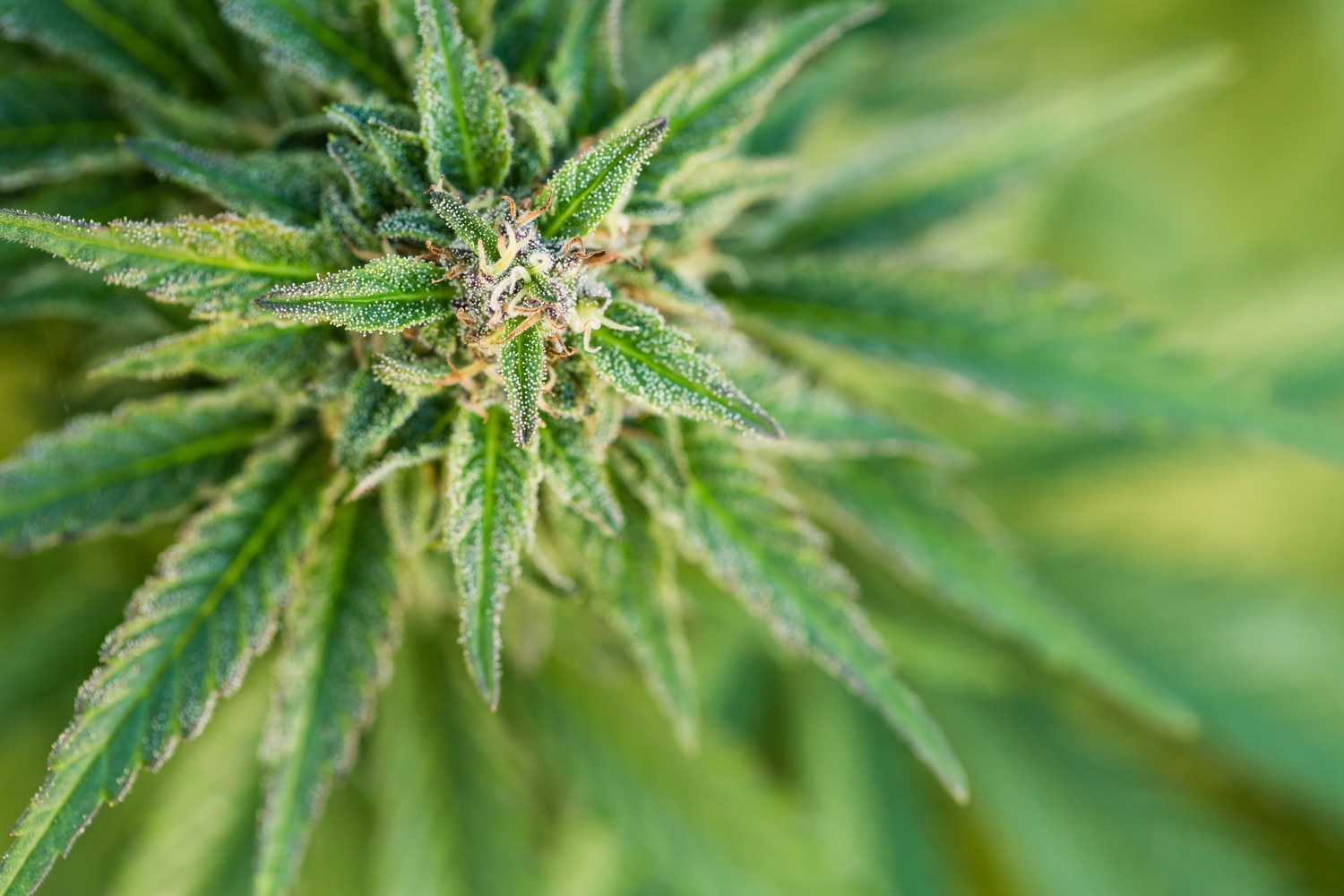Live resin and distillate are now the two premier types of cannabinoid extracts available on the market. What’s less clear, though, to cannabis consumers is how these two extract types are different from each other. Is it true, for instance, that live resin tastes better than distillate, and does distillate really pack more potency than live resin?
Whichever questions you might have regarding how live resin and distillate compare, they’ll be answered in this comprehensive guide. Learn what live resin and distillate are and how they’re different from each other.
What Is Live Resin?
The term “live resin” can refer to a few different subtypes of cannabis extract, but they all share one characteristic — they feature live terpenes and flavonoids extracted from flash-frozen plants. As a result, the flavor and overall terpene expression of live resin cannabis plants is higher, which many users find to be highly desirable. However, the cannabinoid concentration in live resin cannabis extracts hardly ever exceeds 65%.
How Is Live Resin Extracted?
Live resin consists of cannabinoids combined with terpenes and flavonoids derived from cannabis plants that were flash-frozen at the point of harvest. Two different methods can be used to produce live resin, the first of which keeps all of the desired components in the cannabis plant together for the entire extraction process.
The alternative method involves removing all the desired components from fresh-frozen cannabis plants and then separating the terpenes and flavonoids from everything else. The remaining extract is purified into cannabinoid distillate, which is then reunified with the terpene and flavonoid extract.
Most methods of producing live resin use butane as a solvent since it is considered to be gentler on terpenes. Once the basic extract is acquired, it can be whipped to make live resin budder or simply offered in its natural, raw state.
What Is Live Resin Used For?
Live resin is usually reserved for situations where experiencing the full flavor and effects of cannabis is desired. Often both more expensive and less potent than alternative extract types, live resin is considered to be a connoisseur extract that’s ideal for:
- Vaping: Whether it’s with a dab rig or a vape pen, vaporization is the premier way to enjoy live resin. Live resin cartridges and dabs unlock the full flavor of cannabis.
- Smoking: These days, live resin is often also used as a joint coating or bowl topper, making smoked cannabis more flavorful and delicious.
- Taking orally: Many edibles now also contain live resin. Using live resin as the cannabis concentrate in your edibles makes them taste better and potentially hit harder.
- Adding to food: Live resin can also be the perfect garnish for many foods and beverages. Just avoid heating your live resin, which would harm its terpenes.
The primary types of products live resin comes in are:
- Vapes: Vape pens and vape cartridges with live resin taste great due to their high concentrations of natural terpenes.
- Dabs: Dabs with live resin taste better and are less viscous than dabs made with cured cannabis.
- Infused pre-rolls: Adding live resin to the outside of a pre-roll increases concentrations of valuable trichomes and turns normal pre-rolls into full-spectrum products.
- Gummies: Live resin concentrates are increasingly popular in gummies due to their terpene-rich flavor and therapeutic effects.
What Is Distillate?
Next to live resin, distillate is the other most popular cannabis extract currently on the market. Instead of focusing on terpenes and flavor, the main point of distillate is to pack in as many cannabis compounds as humanly possible. As a result, distillate often contains as much as 90% total cannabinoids, but its terpene count is much lower than live resin.
How Is Distillate Extracted?
Distillate is one of the simplest types of cannabinoid extracts to make, and you can make it using a wide variety of different solvents. While BHO is essentially a must in the live resin extraction process, distillate extraction can be accomplished just as well with CO2, which some cannabis experts consider to be the cleaner option.
Preserving terpenes is not a priority here, so distillate can be produced from either flash-frozen cannabis flowers or dried flower that has been cured conventionally. In general, the point of the distillation process is to remove other components of cannabis flower to the greatest extent possible while still keeping the extract viscous and not crystalline.
What Is Distillate Used For?
Distillate is primarily used in situations where cannabinoid potency is prioritized and the flavor is not as important. In their defense, distillate cannabinoid extracts very rarely have an unpleasant taste, but they lack the fullness and richness of flavor offered by live resin. Though it might not taste as delicious, distillate is used in many of the same ways as live resin, including:
- Vaping: Live resin vapes are common enough, but distillate is the norm for both dabs and carts due to its reduced cost and increased ease of manufacture.
- Smoking: It’s just as common for pre-rolls to be slathered with distillate as live resin. Distillate is a bit harder to use as a bowl topper, though, due to its increased viscosity.
- Taking orally: Even though live resin tastes better, distillate is still the primary extract type used in cannabis edibles.
Distillate is viable in more product types than live resin, such as:
- Vapes: Distillate cartridges have a higher cannabinoid content than live resin carts.
- Dabs: As the purest form of cannabis concentrate, distillate dabs offer an intense high.
- Infused pre-rolls: Pre-rolls become incredibly powerful when infused with this ultra-concentrated form of cannabis.
- Gummies: Though live resin results in a better flavor, cannabis distillates are less expensive to include in gummies.
- Capsules: Since flavor isn’t a priority, THC distillates are ideal to be put inside capsules.
- Brownies and other baked edibles: Unlike live resin, distillate is suitable for adding to baked goods and other hot dishes.
What Is the Difference Between Live Resin and Distillate?
Now that you’re aware of what live resin and distillate are individually, it’s time to compare the two extracts and decide which is better:
Extraction
Whereas it’s possible to produce distillate using a variety of different means, extracting live resin is a much more delicate process that can only be achieved effectively using BHO. Individuals who aren’t fans of hydrocarbon extraction will want to choose distillate after ensuring it is CO2-extracted.
Terpenes
Live resin undeniably has a higher terpene count than distillate, sometimes exceeding 20% compared to the 5% maximum total terpenes present in distillate. As a result, live resin tastes better and may even be more effective than distillate despite containing a lower concentration of cannabinoids.
Entourage Effect
Live resin extract will provide the entourage effect much more strongly than distillate due to its higher terpene and flavonoid count. Scientists believe that the entourage effect may make cannabinoids and terpenes more potent than they would be on their own due to a form of synergy.
Pros and Cons of Distillate and Live Resin
Let’s continue our comparison of distillate and live resin with a simple table of pros and cons:
Distillate Pros
- A much higher cannabinoid percentage
- High-purity
- It can be extracted with CO2
Distillate Cons
- Low terpene count
- Reduced entourage effect potential
Live Resin Pros
- Very flavorful
- Terpenes are preserved
- Unlocks the full potential of the entourage effect
Live Resin Cons
- It is almost always extracted with BHO
- Lower cannabinoid concentration
Which Is Better: Live Resin vs. Distillate?
If either live resin or distillate was objectively better than the other, it’s likely that one would have already dominated the market, pushing the other type of cannabis extract to the side. The fact that both live resin and distillate continue to exist side by side shows that each extract has something unique to offer.
For those who prioritize flavor in their cannabinoid experiences, live resin could easily be considered the vastly superior option with its enhanced terpene profile. High-tolerance users looking for the most potent products around, though, will appreciate the higher cannabinoid percentage of distillate.
As we’ve touched on throughout the course of this guide, the differences between live resin and distillate are as nuanced as they are profound. In the end, the best way to find out how the two extract types compare is to try them for yourself: How will you truly know if live resin or distillate is best for you until you try them both?









